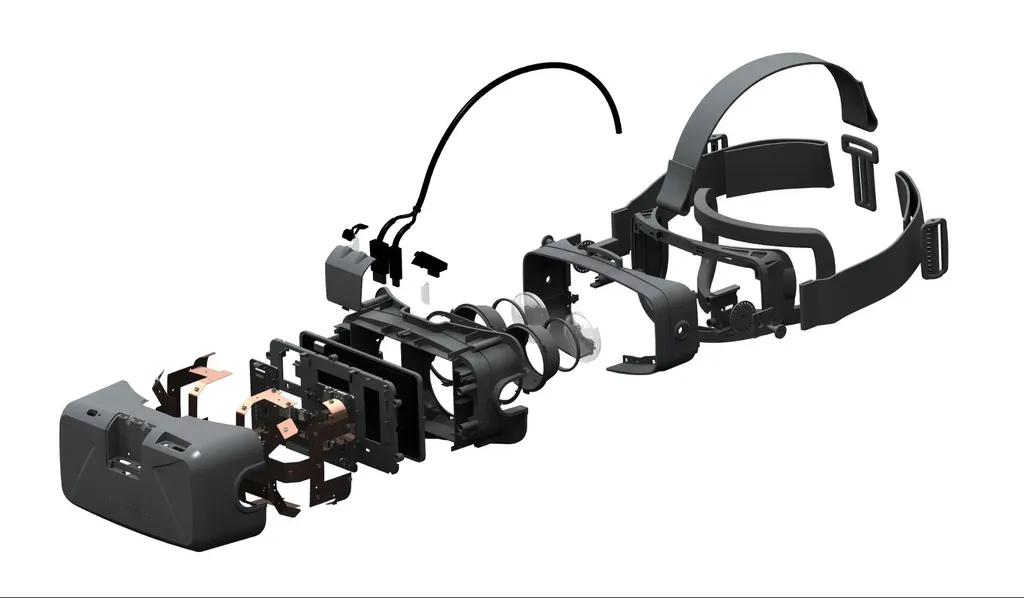Three years ago now (!) during the first Oculus Connect the company made the plans for its first development kit (DK1) open-source so that anyone with the necessary materials could make their own or add to it with their own designs. Now Oculus is doing the same for DK2.
A day ahead of Oculus Connect 4, Oculus has released documents for its second generation development kit, which originally released in mid-2014. DK2 improved upon its predecessor with a 1080p OLED display and positional tracking via an external camera. It in turn was succeeded by the Crescent Bay prototype which laid the foundation for the first consumer version of the Rift, which has been available since March 2016.
The documents include schematics, board layout, mechanical CAD, artwork, and specifications under a Creative Commons Attribution 4.0 license, and firmware under BSD+PATENT licences. That should be all you need to make your very own DK2, outside of a 3D printer and the various components you’ll need to actually build the thing.
In fact, Oculus notes that it might not even be possible to buy some of these components anymore, stating: “We wanted to caveat that some of the components of DK2 are challenging or impossible to source today, so it may not be possible for an individual to build a full headset from the provided files. We hope that parts of this release are useful though as learnings if nothing else!”
We’ll just spend the $499 on the current Rift, thanks.
Oculus has a detailed guide about the headset which we won’t talk about too much because, well, DK2 is kinda dated by now. The current Rift again improved upon DK2 with a higher resolution display, better tracking and of course the Oculus Touch controllers that now come bundled with the headset. Imagine where we’ll be by the time the company makes that open source.
That’s one announcement out of the way before tomorrow’s big keynote. What else does Oculus have up its sleeve?


























